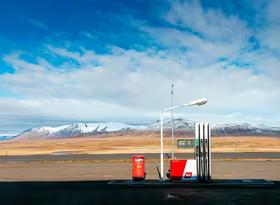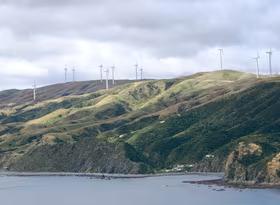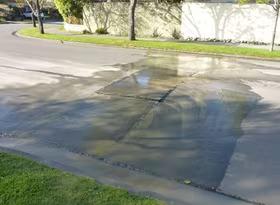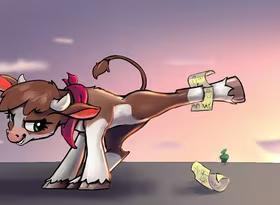Are the oil companies taking us for a ride?
World oil prices are just over $US40 a barrel, down from over $US110 a barrel in June 2014. In New Zealand dollar terms this represents a decline from about $130 a barrel in mid-2014 to something around $50-$60 currently. The figure fluctuates a bit depending on the source of oil, but the general trend is that oil prices are less than half what they were in 2014, even when allowing for the concurrent depreciation in the New Zealand dollar.
The decline in prices at the local pump have been far more muted, with diesel prices declining by 25%, and petrol prices declining by 11-13% in the 18 months to December 2015. Some of this reflects that the import price of oil only represents one component of the price of petrol at the pump. There are also refining, delivery, station operation, and overhead costs. But even so the decline in pump prices seems overly low in comparison to the decline in import prices for oil.
The implication is that there has been a considerable widening in margins being taken by oil companies. The oil companies might argue that margins have been tight but as a casual perusal of Graph 1 below would suggest these margins have probably been widening since 2011. Indeed the MBIE Energy Price Data Tables indicate that importer margins on retail petrol have expanded from around 15c per litre at the end of 2010 to close to 30c per litre in 2015. Retail margins for automotive fuels appear to be currently at record high levels (see Graph 2). At a time when farmers are struggling with low international commodity prices I am sure that they will be thrilled to know that they are accommodating the local oil industry to extract record returns from diesel sales.
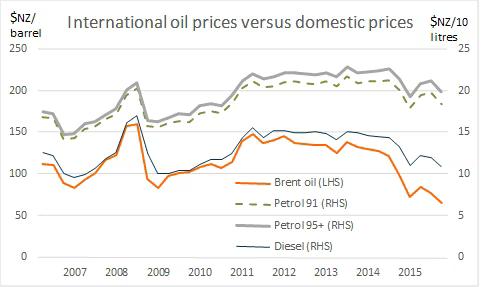
A lack of competitive pressures appears to be a factor behind the recent expansion in margins. A short trip from Wellington to the Wairarapa shows that there is a 9-10 cent differential in per litre retail petrol prices. Are the cost advantages that Wairarapa has worth 10 cents a litre? Or perhaps the presence of Gull, an independent petrol retailer, active in the Wairarapa but absent from Wellington, is having an influence? The fact that prices are so much higher in Wellington begs the question: are the main petrol companies currently extracting obscene profits in Wellington? Or perhaps the issue might be that they are practicing predatory pricing practices in the Wairarapa? Or maybe it’s a bit of both?
Something seems to be adrift in the domestic oil market and sufficiently so as to warrant some form of investigation by the Commerce Commission. In a simple back of the envelope exercise, I estimate that retail petrol prices have been consistently 5-10 cents per litre above what the decline in world oil prices would suggest are warranted. For diesel prices the range seems to be between 8 and 13 cents. These numbers reflect the extent that a model relating domestic retail prices to international oil prices (expressed in New Zealand prices) under-forecasts actual retail prices in New Zealand since September 2014. Given that New Zealanders consume around 3 billion litres of petrol and 3 billion more litres of diesel each year, such a margin excess is economically meaningful. An excess margin of around 10 cents per litre would represent a transfer from consumers to oil companies in the region of $600m each year. This is equivalent to around one quarter of one percent of GDP. In other words, I am asking have the oil companies just expropriated about one-eighth of the estimated 2% economic growth over the last year or can they explain why the climb in their margins is justified?
Dave Grimmond (davidg@infometrics.co.nz) is an Associate Economist at Infometrics.
